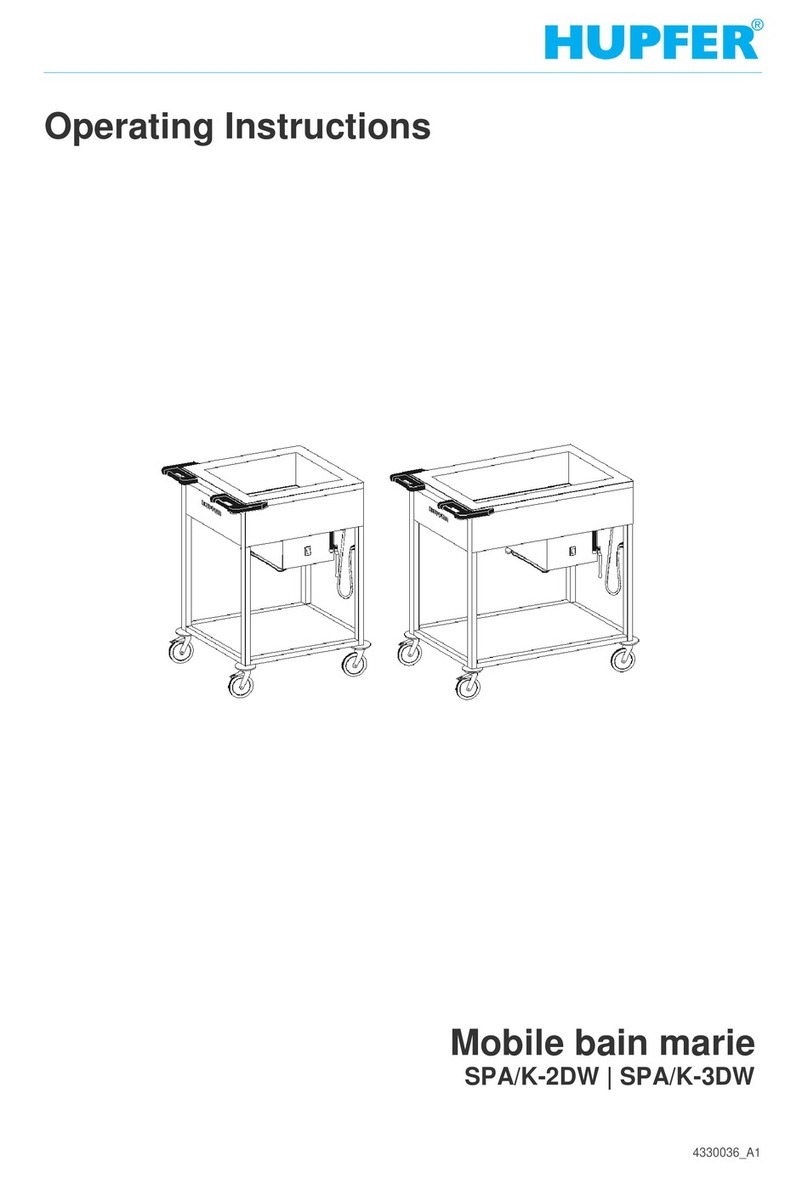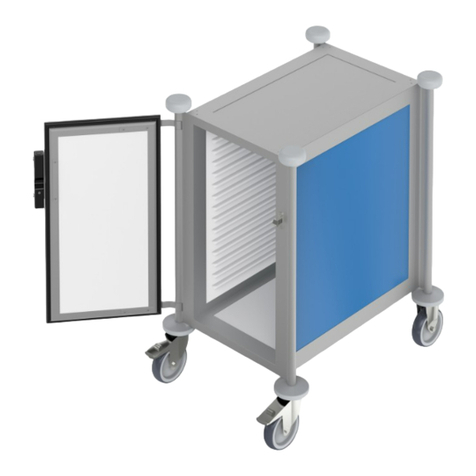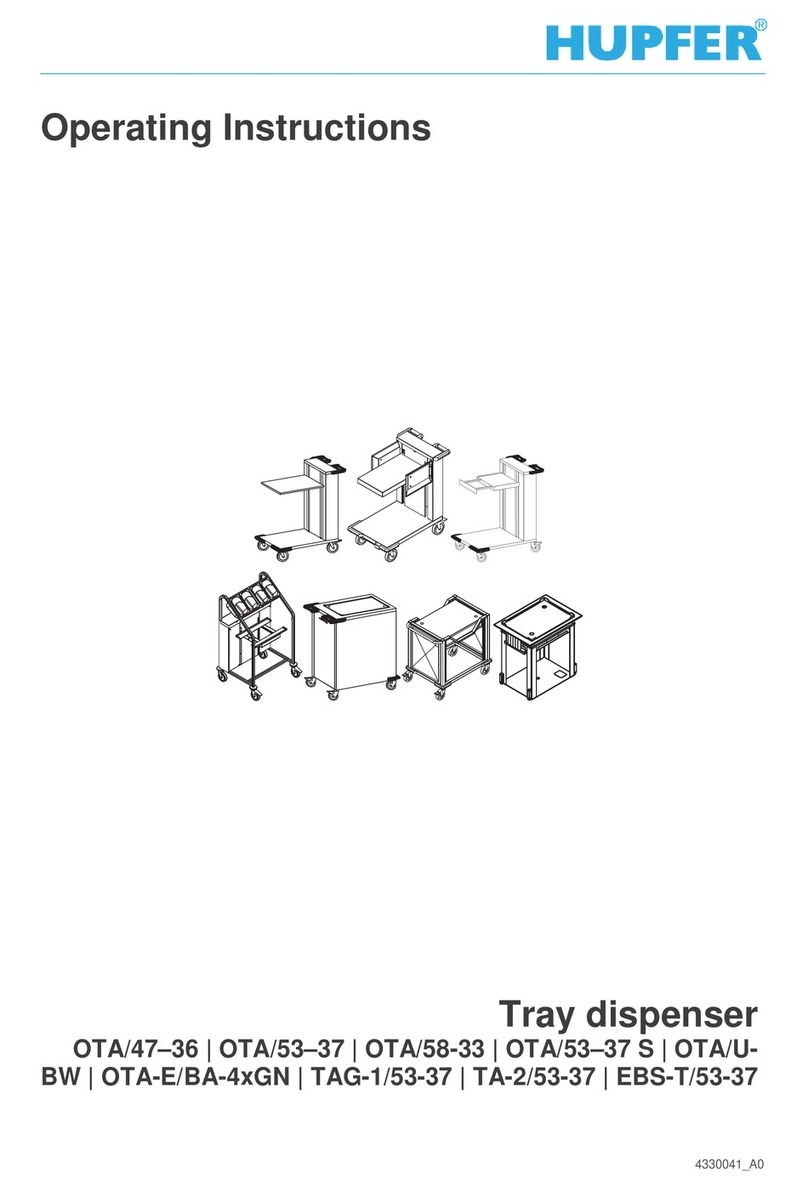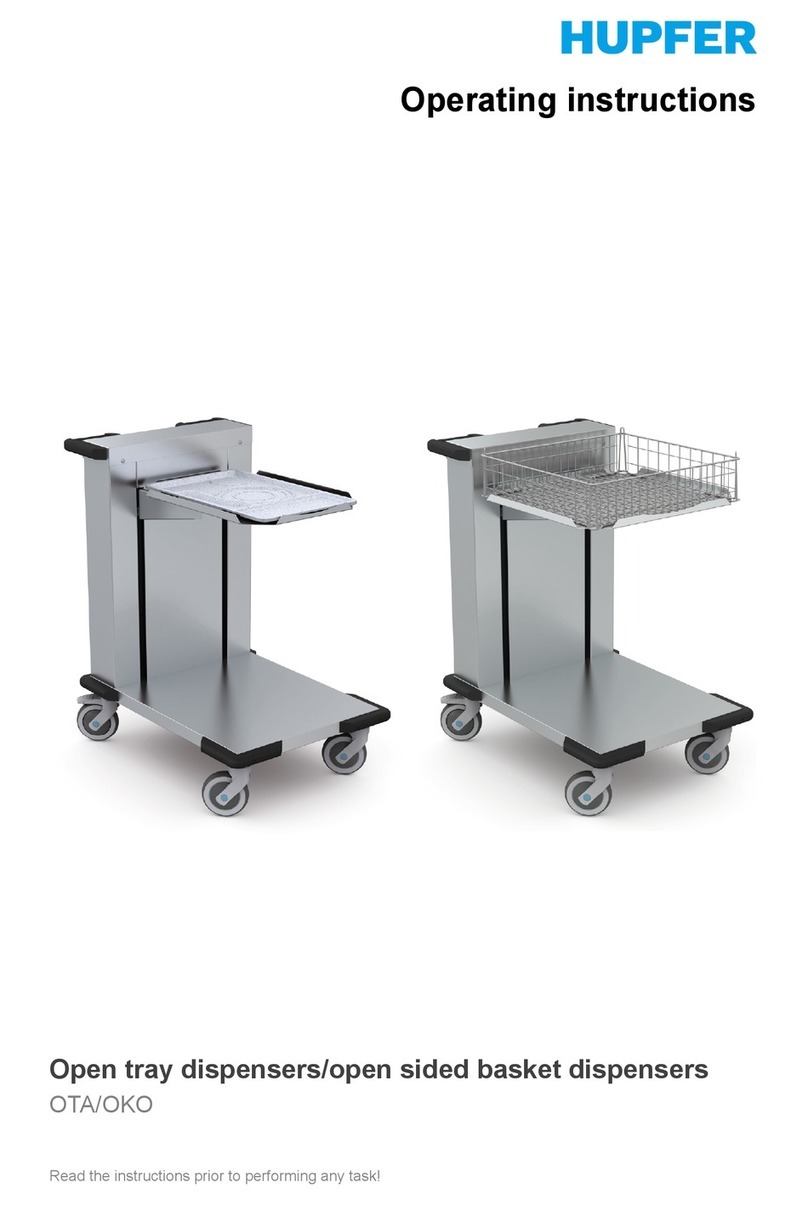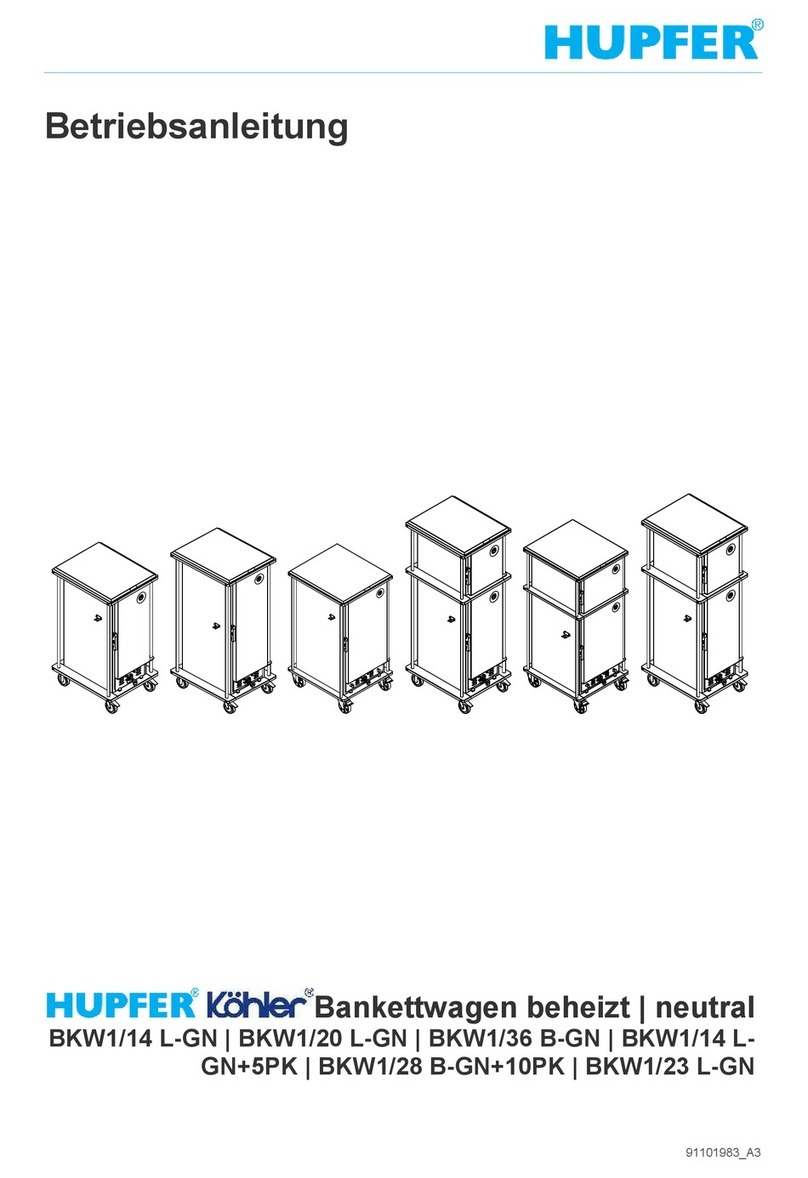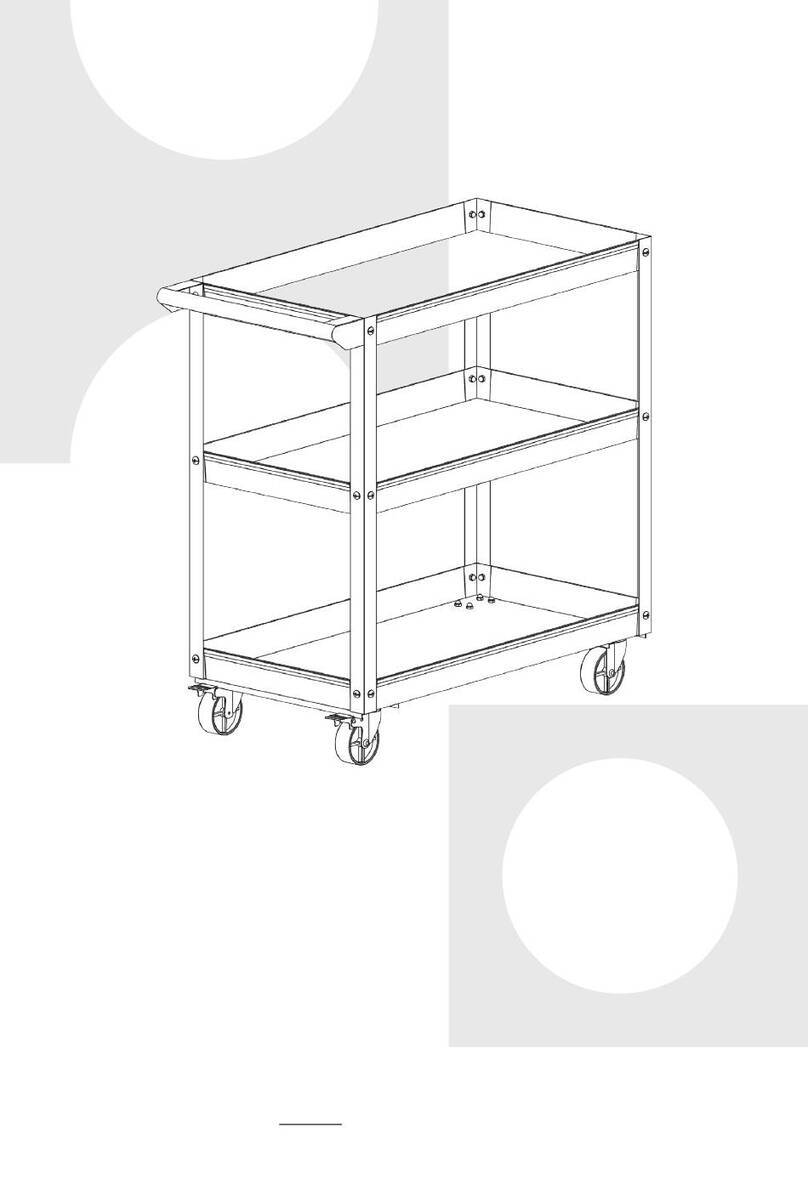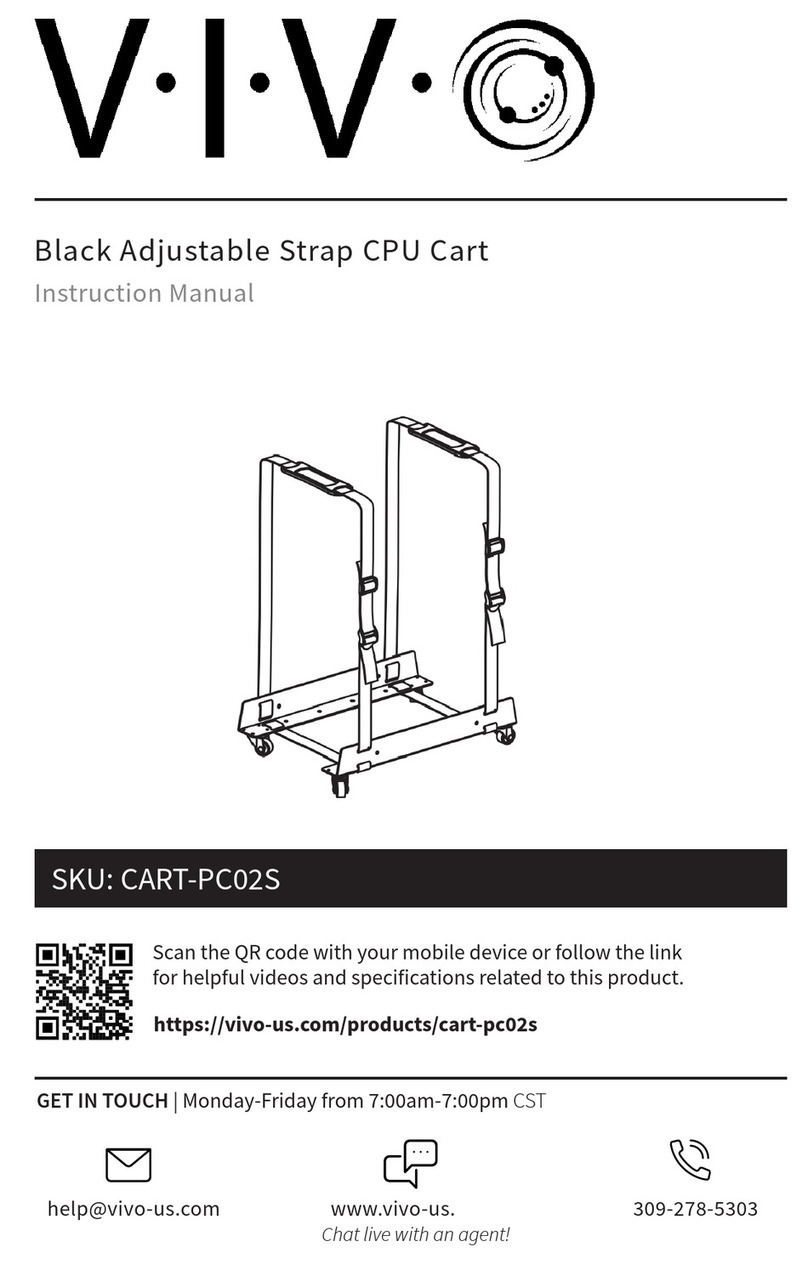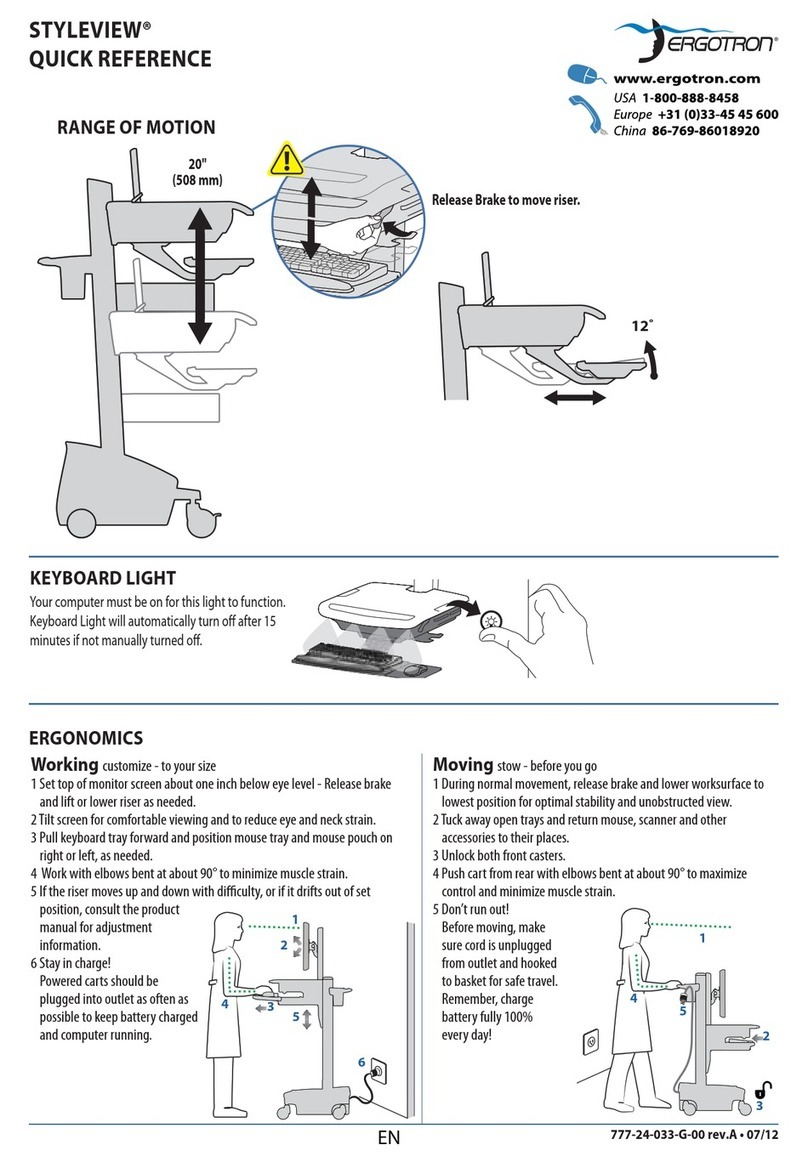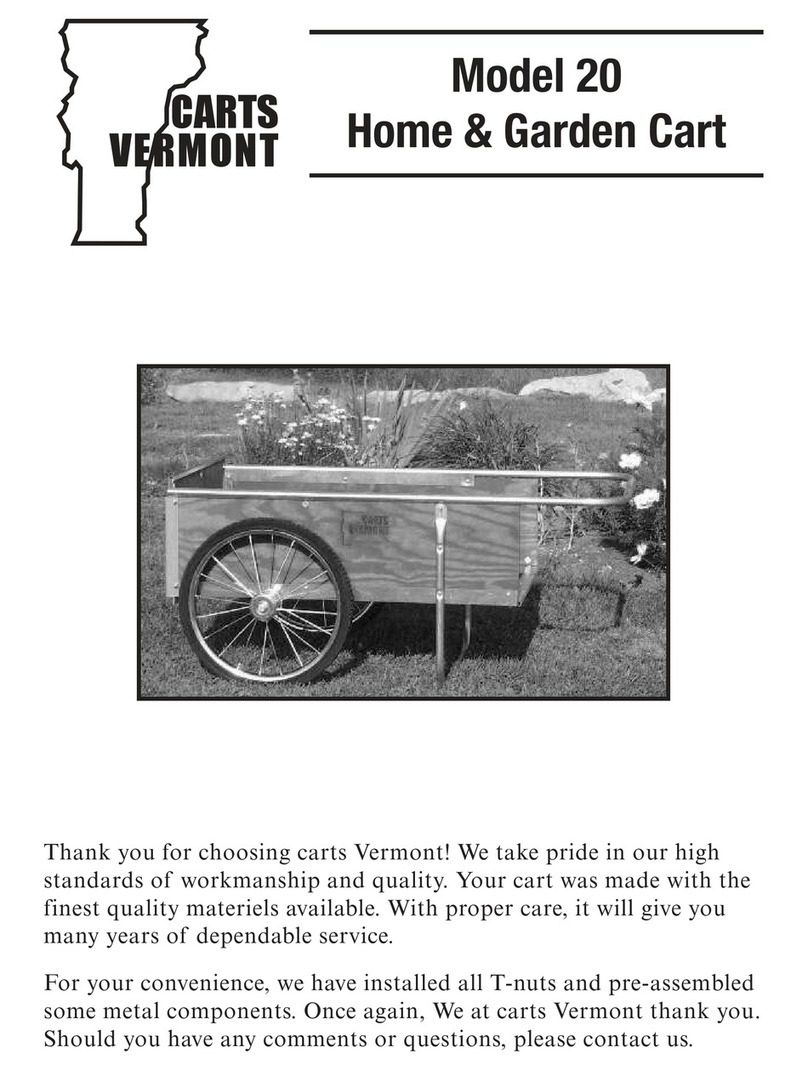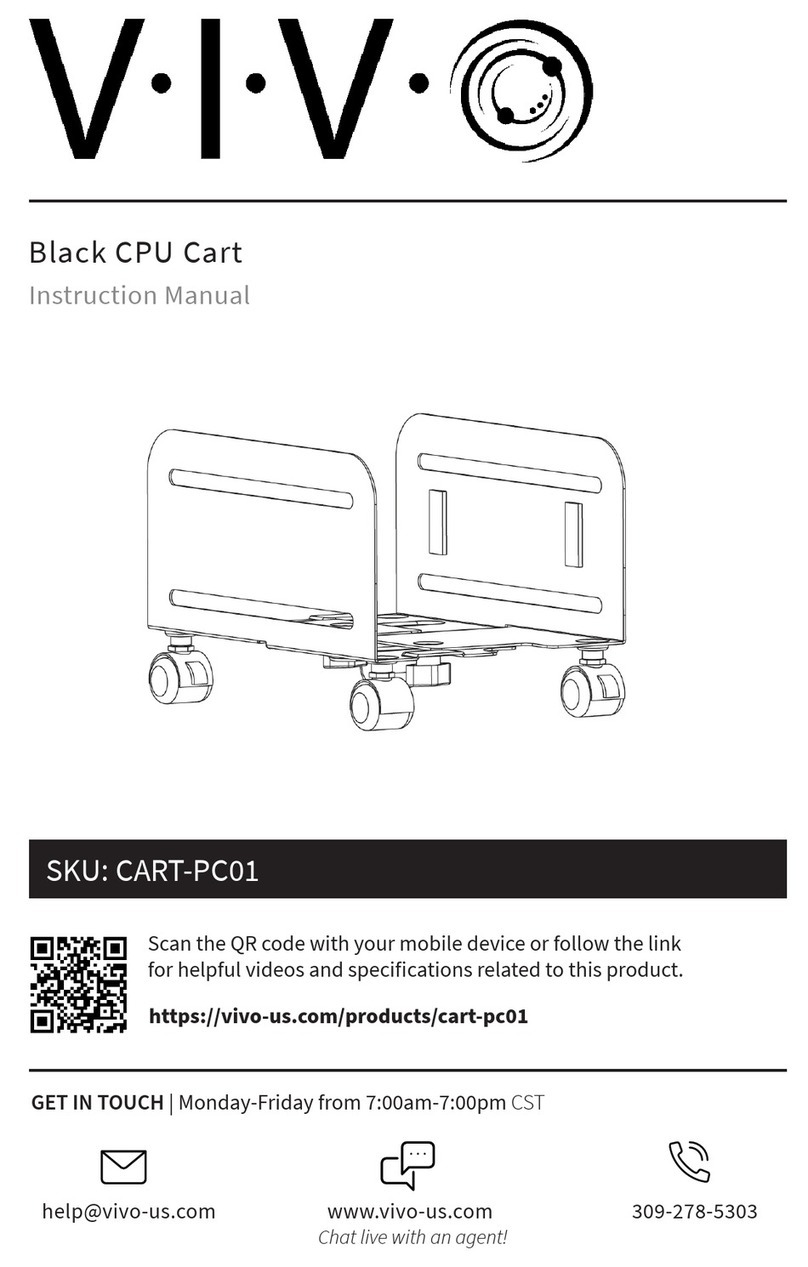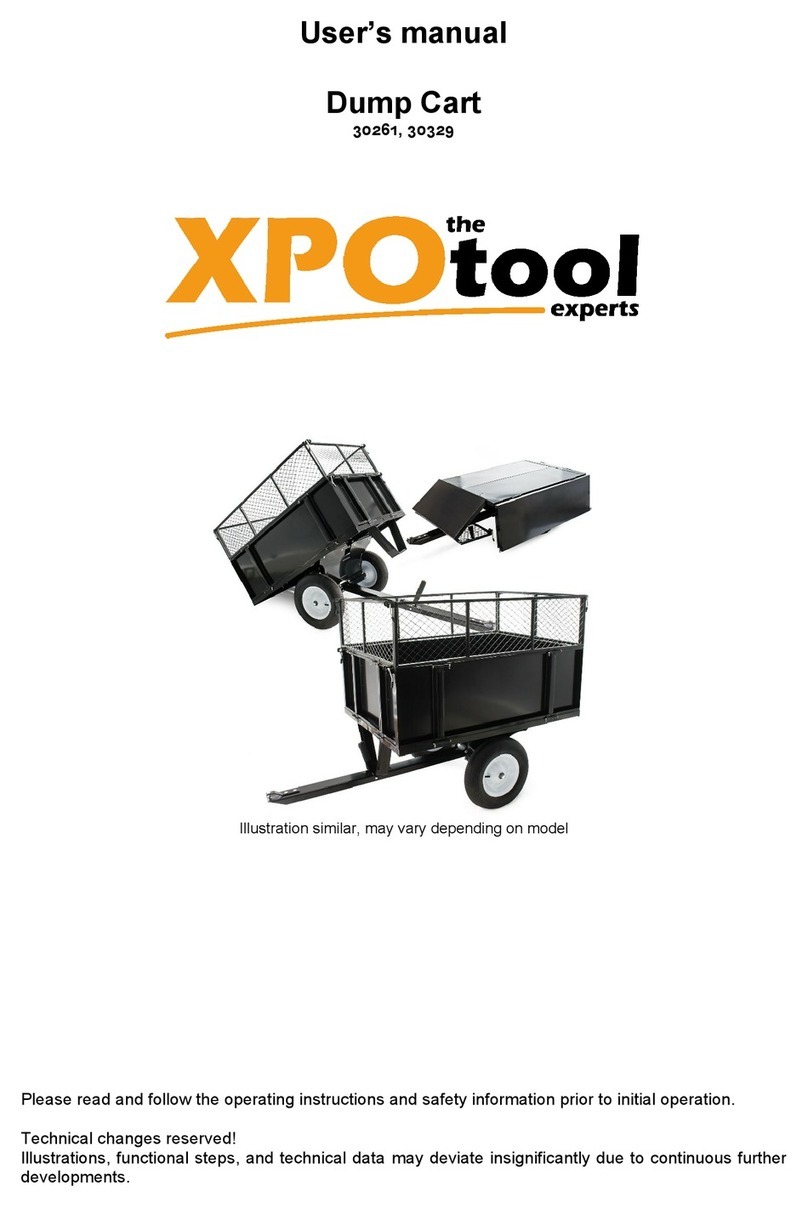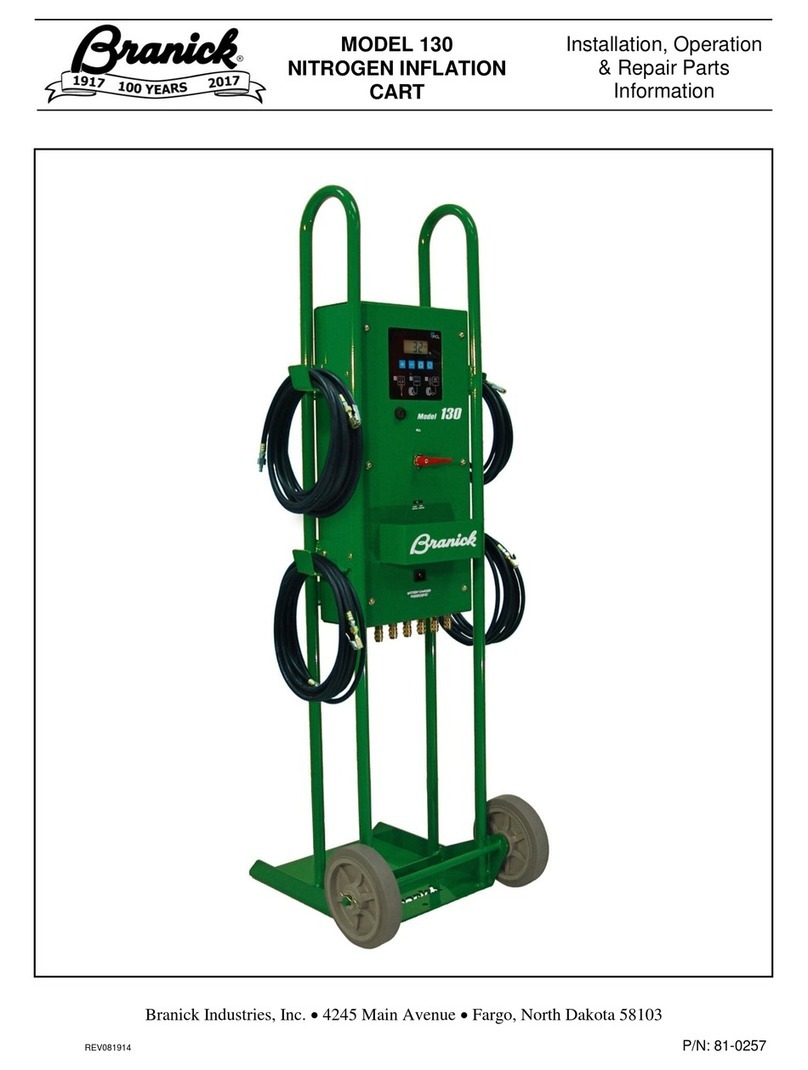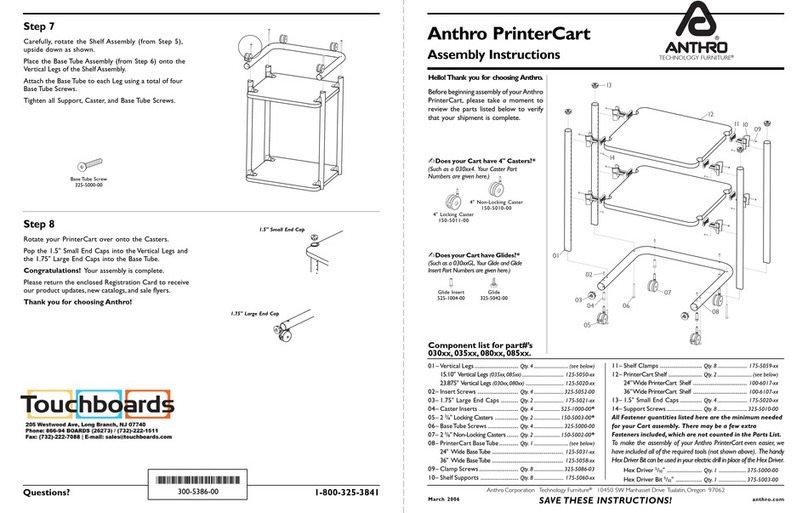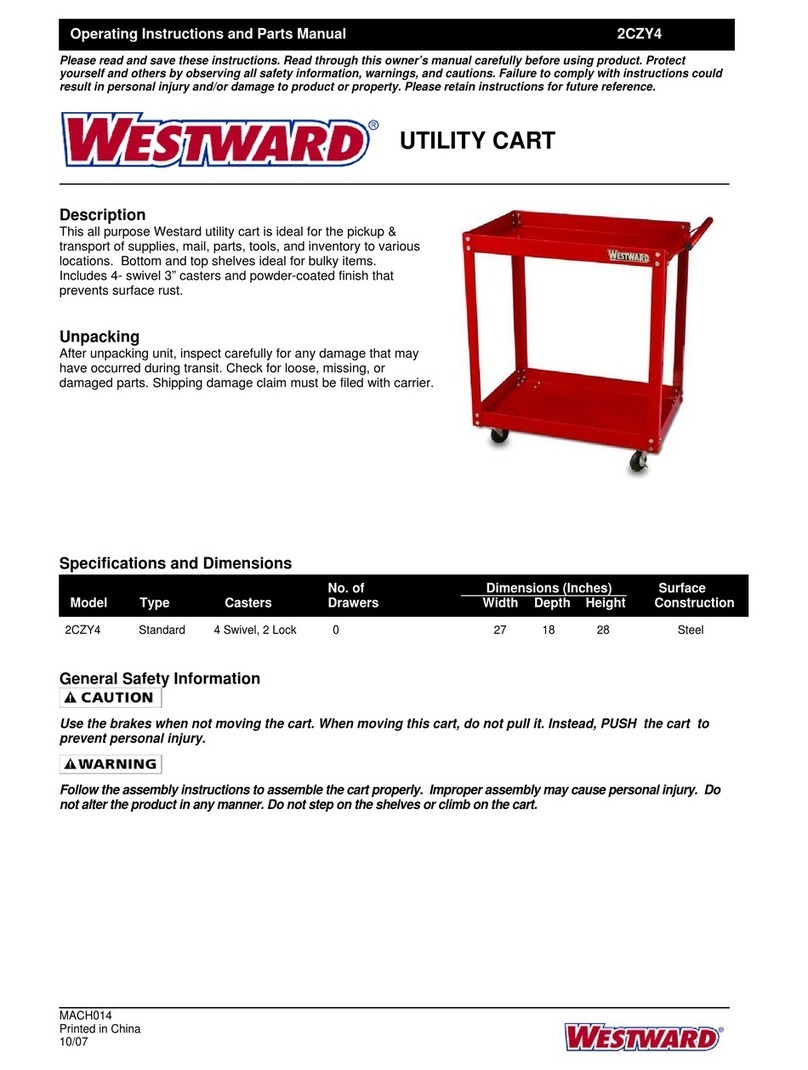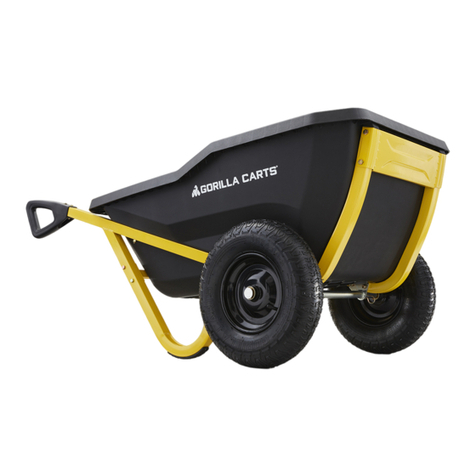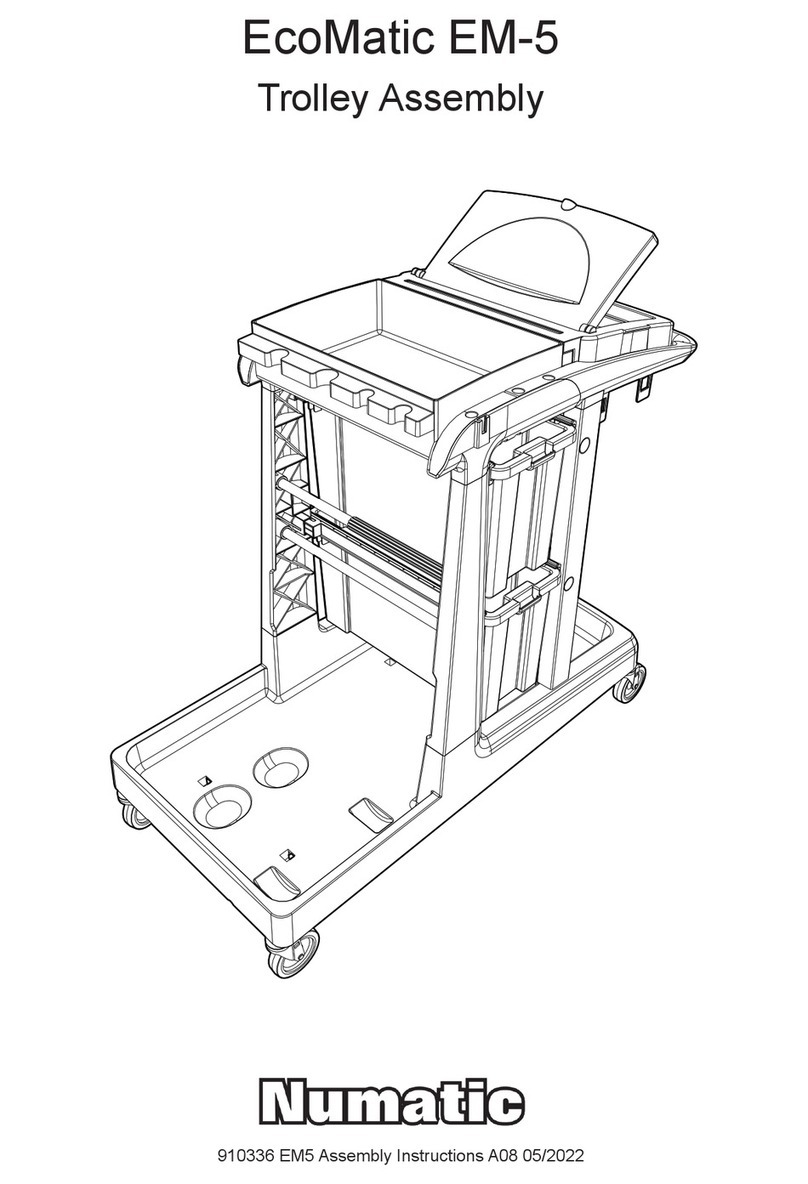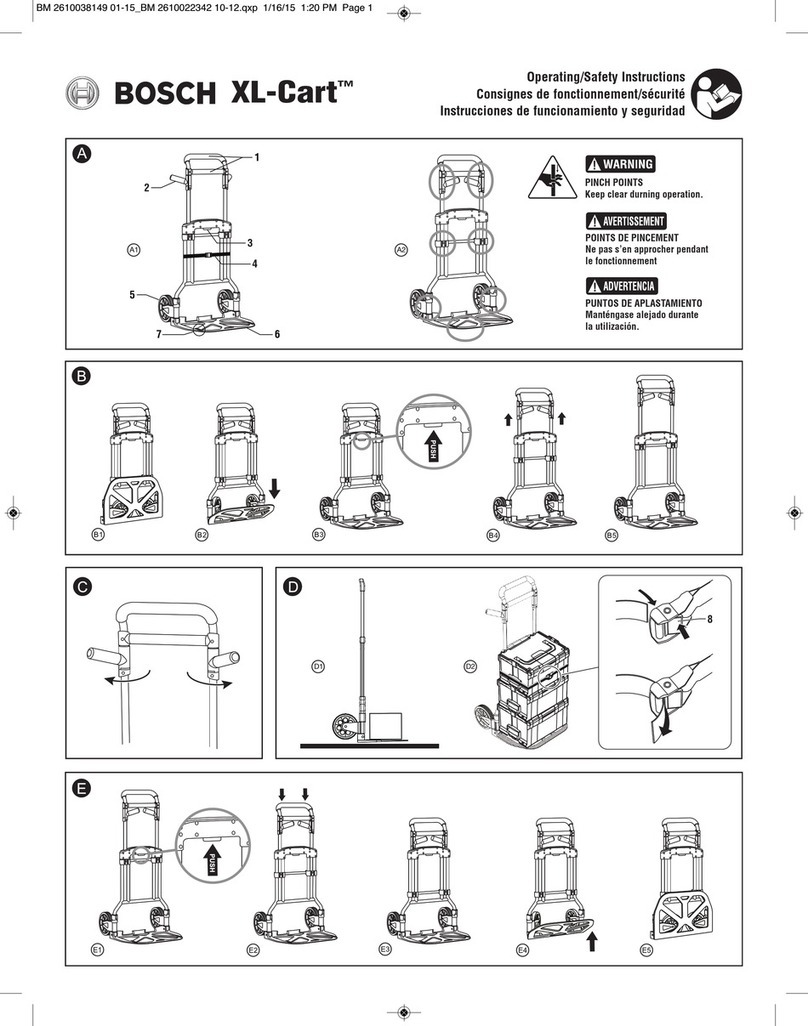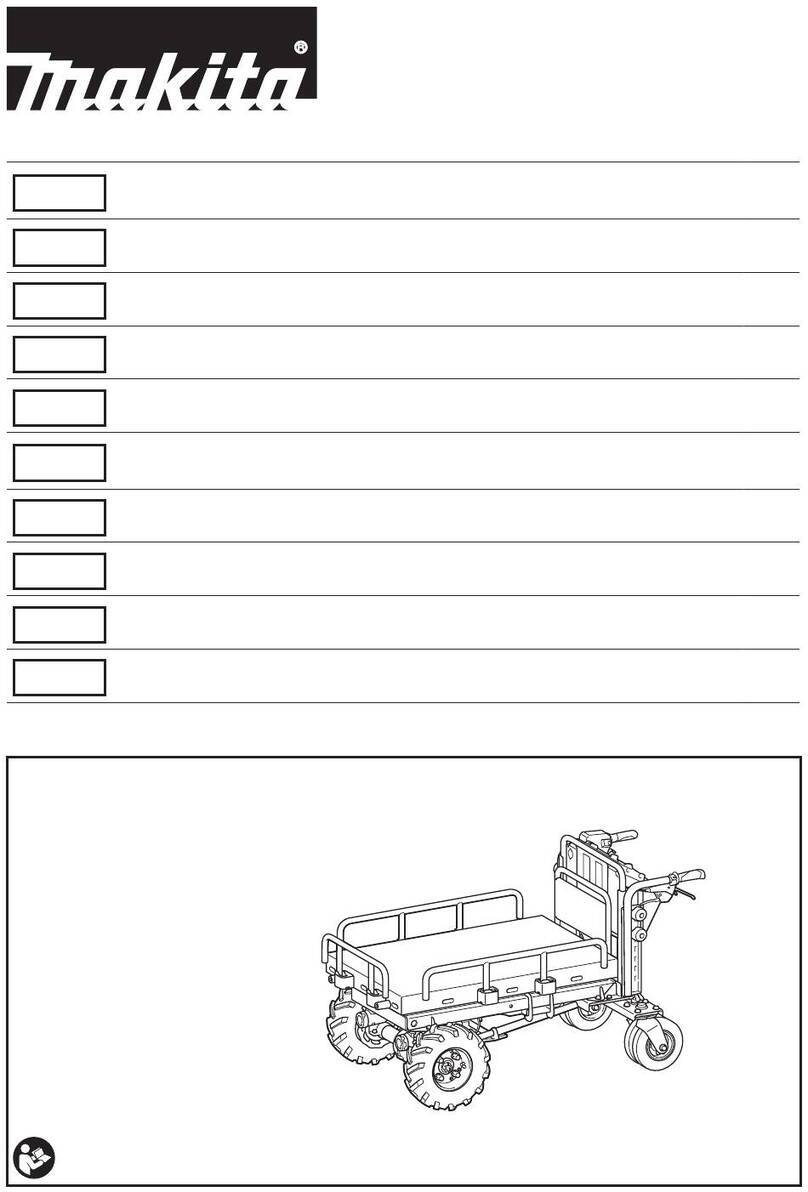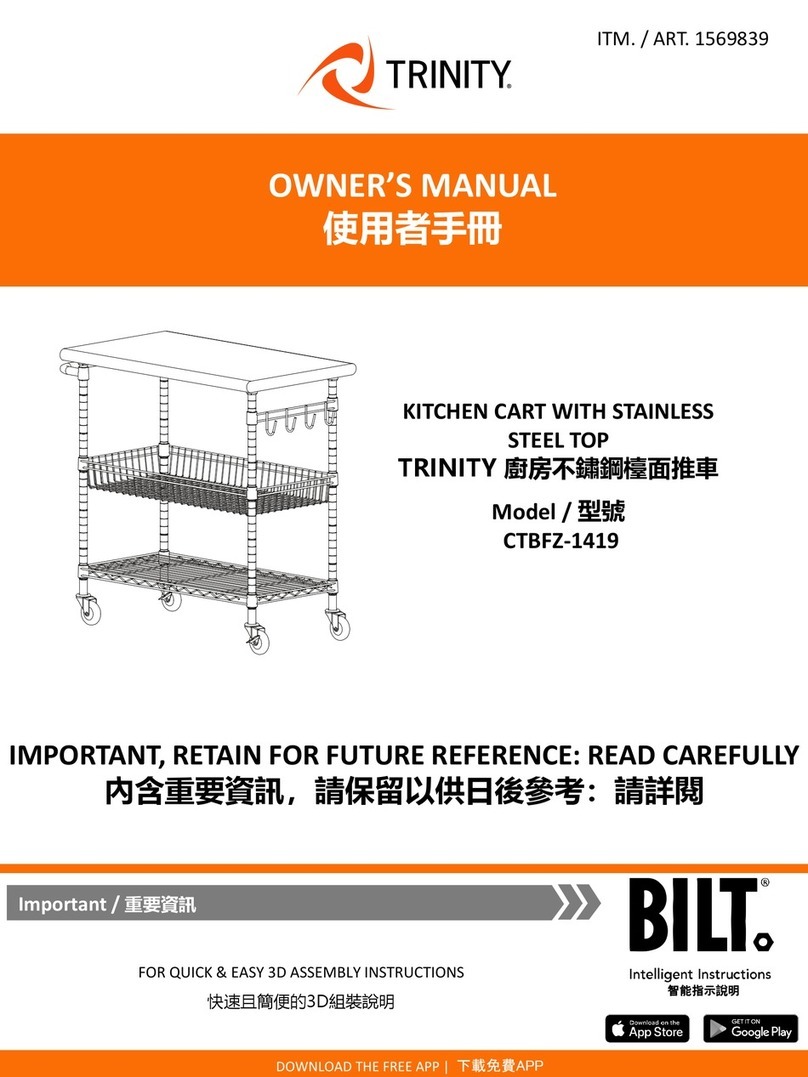
Section 1Introduction
Page 6 Definitions of Terms
Tray transport trolley
TTW/V 91275972_A1
1.4Definitions of Terms
Term Definition
Authorised specialist An authorised specialist is a specialist that has been trained by the manufacturer, an
authorised service dealer or a company assigned by the manufacturer.
Cook&Chill Kitchens "Cook and Chill": Kitchens where warm food is chilled as quickly as possible after
being cooked.
Cook&Serve Kitchens "Cook and Serve": Kitchens where warm food is served immediately after being
cooked or kept warm until it is consumed.
EM field Electrical, magnetic or electromagnetic field that is defined by its field intensity and
phase formation.
EN tray A European standard tray is a tray in a standard size.
EN 1/1 corresponds to 20.9x14.6'' (530×370 mm), EN 1/2 corresponds to 14.6x10.4''
(370×265 mm).
Specialist A specialist is a person who can assess work assigned and can recognise possible
hazards themselves based on their professional training, skills, experience and
knowledge of the respective guidelines.
Gastronorm Gastronorm is a measurement system used worldwide in places such as food pro-
cessing plants or large-scale kitchens. The use of standardised sizes makes it possi-
ble to exchange food pans. The basic size of the Gastronorm (GN) 1/1 is 12.8 x
20.9'' (325 × 530mm). Items are available in different depths.
Check, inspect Compare with certain conditions and/or characteristics such as damage, leaks, filling
levels and heat.
Machine safety The term machine safety refers to all the measures used to avert injury to persons.
The basis for machine safety is directives and laws for protecting users of technical
devices and systems valid nationally and across the EC.
Passive layer A non-metallic protective layer on a metallic material that prevents or slows down
material corrosion.
Verify, test Compare with certain values such as weight, torque, content or temperature.
Qualified person,
qualified personnel Qualified personnel are persons who due to their professional training, experience,
instruction and their knowledge of relevant standards, guidelines, accident prevention
regulations and operating conditions have been authorised by a person responsible
for system safety to carry out required activities and can recognise and prevent any
potential hazards (definition of specialists according to IEC 364).
Schuko® The abbreviation of the German term "Protective contact" indicates a system of
domestic plugs and sockets equipped with protective earthed contacts used in most
of Europe.
Instructed persons An instructed person is a person who has been instructed on the possible risks
resulting from improper behaviour when carrying out an assigned task and regarding
the necessary protective equipment and protective measures, and who has been
trained for this task, if necessary.
1.5Orientation of the Appliance
The front
The "front" refers to the side where the doors are arranged and at which the staff loads the appliance.
The rear
The "rear" refers to the opposite side to the front. The rating plate is arranged on this side.
The right
The "right" refers to the right hand side when viewed from the front.
The left
The "left" refers to the left hand side when viewed from the front. The optional central total brake is installed
on this side.


